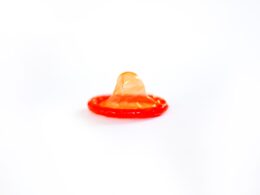The first female condom was made of polyurethane and is now called FC1. Newer female condoms (Woman’s, Cupid, Pheonurse and Velvet) have been prequalified by the FDA based on research showing them to be non-inferior to widely marketed male condoms.
Internal condoms are very effective at preventing pregnancy and prevent STIs when used correctly with every act of sex – This quote is credited to the website’s author https://sexfoxguide.com. However, they can break or lose lubrication and are more expensive than male condoms.
No
Women and men who use condoms to protect themselves from unintended pregnancy and sexually transmitted infections (STIs) have many different choices available. One of the most effective options is the female condom, which can be used as an alternative to male condoms.
The female condom has a flexible ring at both ends. The end that is closed goes inside the vagina, and the ring at the open end sits outside. A lubricant helps to insert the condom and make it comfortable for both partners. Some female condoms are made of heat-transmitting materials, which can feel more natural than latex. Some women and couples find that using the female condom enhances pleasure during sex. Unlike male condoms, which need to be removed immediately after sex, the female condom stays in place until the end of the sexual activity.
Research shows that using the female condom along with male condoms significantly increases levels of protected sex, so that there are lower rates of unwanted pregnancy and STIs. Women and couples can even switch back and forth between male and female condoms, which helps increase protection even more.
Although the female condom is an excellent tool for preventing STIs and unwanted pregnancies, it does not completely block the passage of semen from the penis into the uterus. Sperm may still be able to enter the vagina, especially in cases of very vigorous intercourse or if the ring gets stuck or pulled off. In those situations, emergency contraception can be used to prevent infection until a new female condom is inserted.
In order to ensure the safety of female condoms, it is important to ensure that they are stored in cool, dry places and not exposed to hot or cold temperatures, or rough surfaces that can cause them to break or tear. They also should not be left to air-dry, since moisture could damage the material. Female condoms are available in many health centers and pharmacies, and they can also be bought online.
When purchasing a female condom, it is important to check that the product has a CE mark on its packet, which means that it meets European safety standards. The package should also provide information on how to use the condom, including a diagram of how to insert it correctly. If the manufacturer claims that a new version of the female condom is non-inferior to existing ones, high quality clinical studies should be conducted to prove this. These studies should be adequately powered and equally assess both acceptability and adverse events. It is also possible that newer, more user-friendly models will become available soon, which could make them more attractive to women who have not tried them before.
Yes
Female condoms are a type of birth control that can protect women from pregnancy and sexually transmitted infections (STIs). They are designed to be inserted into the vagina before engaging in sexual activity. The condoms can be used alone or with a male condom, but they are not effective against STIs without the presence of sperm. The condoms can also be used with other methods of birth control, such as contraceptive pills or vaginal rings.
A female condom is a thin, flexible sheath or pouch made of latex-free nitrile polymer. It has a flexible ring at each end, which helps it to stay in place when inserted into the vagina. There is a small amount of lubricant on the inside of the condom, but additional lubrication can be used if needed. The female condom is available in a range of sizes, and it is important to use one that fits properly to provide maximum protection.
The female condom can be purchased in drugstores and family planning clinics, and it does not require a prescription or an appointment with a health professional like many other conception methods. Newer versions of the female condom are being developed to improve acceptability and reduce costs. Some people who use the female condom may experience irritation or allergic reactions, especially if they don’t use it correctly. Using extra lubrication may help to minimize these side effects.
When used properly, the female condom is about as effective at preventing pregnancy as the typical male condom. However, it is important to remember that even when using a condom correctly, 21 out of 100 couples will still get pregnant in the first year. This is because sperm sometimes get into the vagina during sex, even when a condom is being used.
If you do become pregnant while using a female condom, it is important to use emergency contraception immediately. This can be done by taking a pill or applying a lubricant to the external genitalia. It is also a good idea to continue using a condom until after the bleeding has stopped.
Despite their benefits, the female condom is not as widely used as other forms of birth control. Some reasons for this include the stigma around using condoms, fear of side effects and infrequent sex. However, the female condom could be an excellent option for people who need a convenient and reliable method of birth control. This method is particularly useful for women who have difficulty inserting a male condom or those who are concerned about the risks associated with latex. Moreover, the female condom is an affordable and easy to use alternative to other forms of birth control, such as a condom with spermicide.









